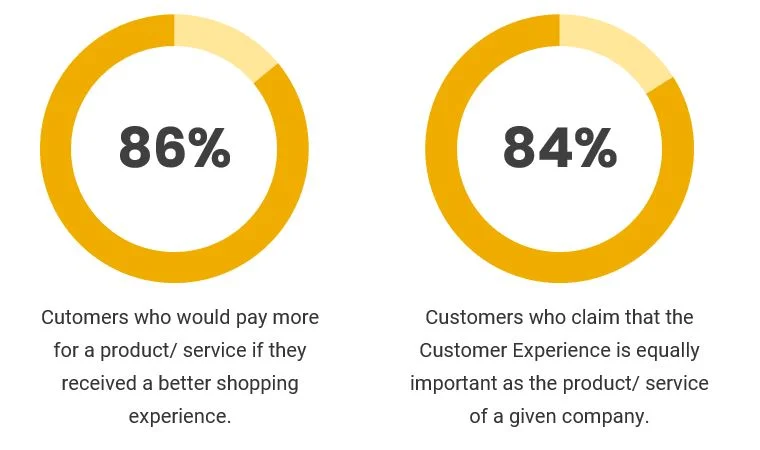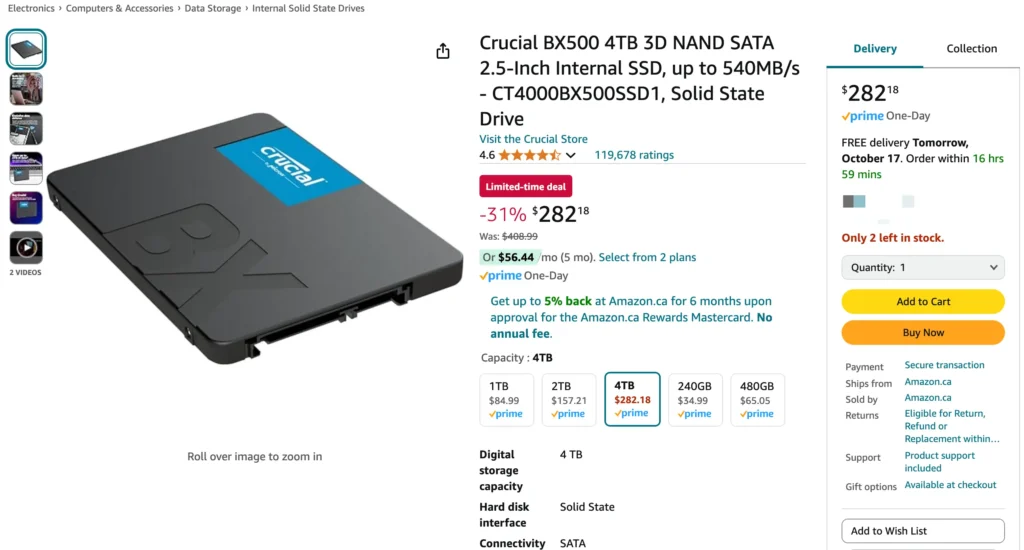86% of consumers are willing to pay more for a better customer experience. That’s the power of putting the customer first.

When we talk about the Four C’s of marketing, we’re really focusing on a customer-first approach. It’s all about understanding what your customers want and building your strategy around that.
The old school Four P’s (Product, Price, Place, Promotion) used to be the gold standard, but today, customers expect more than just a product on a shelf.
They want a seamless experience that addresses their needs from the very beginning. This is why marketers are shifting to the Four C’s: Consumer, Cost, Convenience, and Communication.
The Four C’s not only redefine how businesses market but how they deliver value. By focusing on consumer needs, minimizing costs beyond just price, offering convenience, and maintaining open communication, brands can drive engagement and loyalty like never before.
Let’s break it down and show how you can use the Four C’s to optimize your marketing strategy and connect with your audience in a way that drives real results.
What Are The Four Cs of Marketing?
The Four C’s of marketing—Consumer, Cost, Convenience, and Communication—reframe the traditional marketing approach to be customer-centered.
Consumer replaces the idea of Product. Instead of just focusing on the product itself, you focus on what the customer actually needs. You create solutions around their problems, preferences, and pain points.
Cost looks beyond the price tag. It’s about the total cost to the consumer, including time, effort, and emotional investment.
Convenience shifts away from Place, addressing how easy it is for customers to access your product or service. This includes optimizing everything from eCommerce checkout processes to customer support.
Communication replaces Promotion—it’s no longer a one-way message from brand to consumer. It’s a two-way dialogue, emphasizing transparency and engagement with your audience.
Businesses that implement the Four C’s in their marketing strategies outperform those that stick with the old Four P’s. It’s about creating customer-driven experiences, not just selling products.
Consumer: Understanding Your Target Audience
To market effectively, you need to deeply understand your audience. The days of pushing a product and hoping it sticks are over. It’s about knowing exactly who your customers are, what they need, and how your product or service solves their problem.
Watch my video on the copywriting research process which can directly apply to other types of marketing campaigns as well.
Start by researching demographics—age, gender, income level, geographic location. But don’t stop there. Dig into psychographics—their lifestyle, values, and buying motivations.
What are their pain points? What keeps them up at night? The more detailed your audience profile, the more targeted your messaging.
Use data to understand behavior, as well. Tools like Google Analytics, social media insights, and customer surveys can give you a clear picture of how your audience interacts with your brand.
For example, 84% of consumers say being treated like a person, not just a number, is essential to winning their business, according to Salesforce. You can’t do that unless you know your audience inside and out.
Another key is personalization. Customers now expect tailored experiences, and if you’re still marketing with a one-size-fits-all approach, you’re leaving money on the table.
Use all of this insight to create customer personas, or profiles that represent your ideal buyers. When you understand your audience at this level, your copy, design, and overall marketing strategy will resonate more deeply, leading to higher conversion rates and stronger loyalty.
Cost: Adjusting Your Pricing For Impact
When we talk about cost in the Four C’s of marketing, it’s not just about the price of your product or service—it’s about the total cost your customer incurs to satisfy their need. This means you need to think beyond the dollar amount.
Cost includes time spent, effort required, and even emotional investment. If your product is hard to buy, difficult to understand, or requires a ton of post-purchase effort, the cost is higher for the consumer.
For example, if a customer has to jump through hoops on your website just to make a purchase, that’s a hidden cost—time wasted. Make buying as easy as possible.
Think of Amazon’s one-click purchase option. They removed friction, reducing the overall cost of satisfaction for the consumer, and that simplicity keeps people coming back.

Another factor in cost is perceived value. Consumers are often willing to pay more if they believe they’re getting more value. So instead of simply competing on price, you need to justify the cost through quality, service, or convenience.
According to Forbes, companies that focus on the total customer experience generate 60% higher profits than their competitors. That’s huge!
By reducing the time, effort, and frustration involved in the customer journey, you lower the total cost to satisfy. And when that happens, customers are more likely to choose you over the competition, even if your price point is higher.
Convenience: Make it Easy to Purchase
Convenience is king. When a customer finds it easy to interact with your brand, they’re far more likely to buy from you. Think about how consumers behave today—they expect instant access, smooth navigation, and minimal effort to get what they want. That’s where convenience comes in.
Start by optimizing your website for user experience. If your site takes too long to load, or it’s difficult to navigate, you’re losing customers before they even hit the checkout.
Make the buying process as simple as possible. One-click purchases, clear calls-to-action, and easy navigation remove friction. Whether it’s through mobile optimization or streamlining the checkout process, your goal should be to remove barriers at every stage. The fewer steps a customer has to take, the better.
It’s not just about the transaction, though. Think about customer support, too. Is it easy for people to get in touch with you? Is your help center well-organized and easy to find? When customers hit a roadblock, they don’t want to wait. Offering live chat, self-service FAQs, or even just clear contact information can make a huge difference.
It’s all about reducing friction—giving people what they want, when they want it, with minimal hassle. In today’s fast-paced world, convenience can be the difference between making a sale and losing a customer.
Communication: Refining Your Messaging
Communication today isn’t about one-way promotion. It’s about building genuine relationships with your customers. It’s no longer enough to just shout your message from the rooftops; you need to be actively listening and engaging with your audience.
Customers expect two-way communication—and the more transparent and accessible you are, the more trust you’ll build.
Start by being where your customers are. If your audience is on social media, engage them there. Respond to comments, answer questions, and participate in the conversation. Keep in mind that 49% of people unfollow brands due to poor customer service. Don’t be a statistic.

Personalization is a big part of this. Use your CRM or email marketing tools to send targeted messages that feel tailored to individual needs. Don’t just broadcast promotions—communicate value, tell stories, and show how your product solves problems.
Don’t forget about feedback. Actively seek reviews, conduct surveys, or simply ask your customers how you can improve. This shows them you value their opinion and keeps them engaged with your brand.
Finally, transparency is key. Be upfront about your products, pricing, and policies. When things go wrong, own up to it. Customers appreciate honesty, and they’re more likely to stay loyal if they feel like they’re being treated fairly.
The Four Cs of Marketing vs The Four Ps
The Four C’s (Consumer, Cost, Convenience, and Communication) shift the focus from the business to the customer, unlike the Four P’s (Product, Price, Place, Promotion), which are more product-driven.
- With Consumer, you’re not just selling a product; you’re solving a problem for a specific audience.
- Cost goes beyond price, including everything the customer sacrifices, like time and effort.
- Convenience focuses on making it easy for customers to access and buy, replacing the traditional “Place.”
- Finally, Communication encourages a two-way relationship with customers, whereas the old “Promotion” was just about pushing a message.
The traditional Four P’s worked when businesses controlled the narrative, but now, customers expect more personalization, engagement, and value.
Brands that embrace the Four C’s build stronger relationships and see greater loyalty and conversions. The Four P’s are about the company; the Four C’s are about the customer. That’s why the Four C’s are so effective in today’s marketing landscape.
Incorporating The Four Cs into Your Marketing Strategy
To incorporate the Four C’s into your marketing strategy, you have to start by focusing on Consumer needs. Research your audience, not just through basic demographics but through in-depth analysis of their pain points, behaviors, and motivations. Understand who they are and why they would choose your product.
Next, address Cost—total cost, not just price. Make sure you’re offering value that goes beyond what competitors offer. This can be through quality, customer service, or time-saving benefits. Highlight the overall value proposition in your messaging.
For Convenience, streamline your buying process. Optimize your site for speed, mobile-friendliness, and easy navigation. Eliminate any friction that could slow down the buying journey. Ensure customer support is accessible and that customers have multiple payment or delivery options. The easier you make it for your audience to engage with you, the more likely they’ll buy.
When it comes to Communication, it’s all about building relationships. Engage customers consistently through social media, email marketing, or community building. Don’t just push products—ask for feedback, answer questions, and provide value. Use data and insights to personalize your communication, and ensure it’s a two-way dialogue, not just promotional blasts.
You’ll also want to test your strategy continuously. Whether it’s split-testing your messaging or experimenting with your checkout flow, gathering data and adjusting accordingly is key. The best marketing strategies are flexible and adapt to customer feedback and behavior.
Wrapping Up The Four Cs of Marketing
The Four C’s—Consumer, Cost, Convenience, and Communication—are more than just a shift in marketing theory. They’re a roadmap for building a customer-centric strategy that drives real engagement and conversions.
Businesses today need to go beyond products and prices. They need to understand their customers deeply, offer value beyond the price tag, and remove any friction in the buying journey.
Communication is about building long-term relationships, not just selling. By putting the customer first, you’ll create stronger loyalty, higher sales, and a brand that stands out from the competition.
Test, iterate, and keep refining your approach because the market is always changing, and so are customer expectations. Use the Four C’s to meet those expectations head-on and turn them into real results.
Schedule a free consultation to learn more about my marketing services that will help your business drive more revenue.














